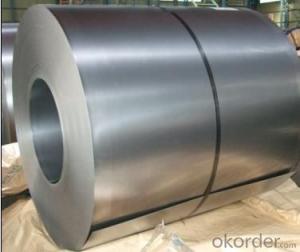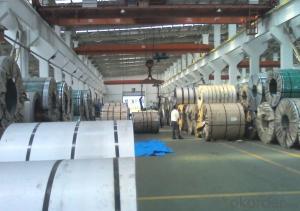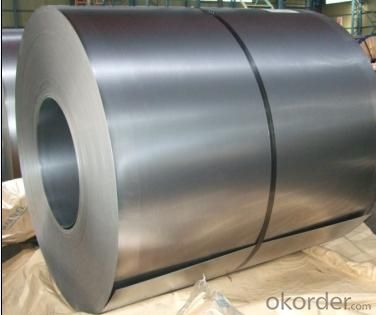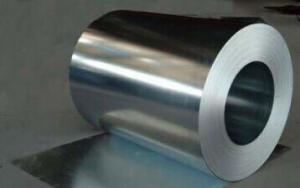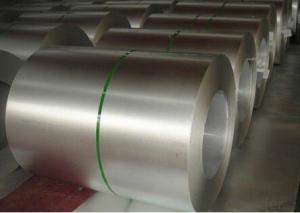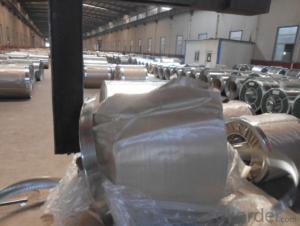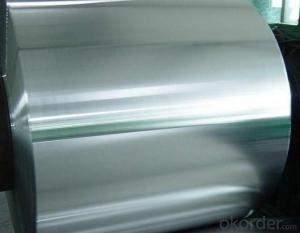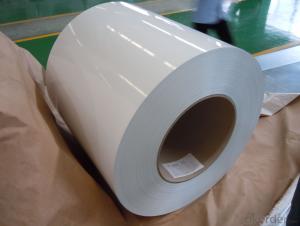Hot Dipped Galvanized Steel Coils as The Building Material
- Loading Port:
- Tianjin
- Payment Terms:
- TT OR LC
- Min Order Qty:
- 25 m.t.
- Supply Capability:
- 10000 m.t./month
OKorder Service Pledge
OKorder Financial Service
You Might Also Like
Hot Dipped Galvanized Steel Coils as The Building Material
1.Structure of Hot Dipped Galvanized Steel Coils as The Building Material
1. Hot Dipped Galvanized Steel Coils as The Building Material with organic layer, which provides higher anti-corrosion property and a longer lifespan than that of galvanized steel sheets.
2. Hot Dipped Galvanized Steel Coils as The Building Material consist of cold rolled, HDG electro-galvanized and hot-dip alu-zinc coated steel. The finish coats of Color Coated Steel Coil can be classified into groups as follows: polyester, silicon modified polyesters, polyvinylidene fluoride, high-durability polyester, etc.
3. The production process has evolved from one-coating-and-one-baking to double-coating-and-double-baking, and even three-coating-and-three-baking.
4. Hot Dipped Galvanized Steel Coils as The Building Material has a very wide selection, like orange, cream-colored, dark sky blue, sea blue, bright red, brick red, ivory white, porcelain blue, etc.
5. Hot Dipped Galvanized Steel Coils as The Building Material can also be classified into groups by their surface textures, namely regular prepainted sheets, embossed sheets and printed sheets.
2.Main Features of Hot Dipped Galvanized Steel Coils as The Building Material.
1) Rust-proof
2) Water-proof
3)Durable using
3. Hot Dipped Galvanized Steel Coils as The Building Material Images
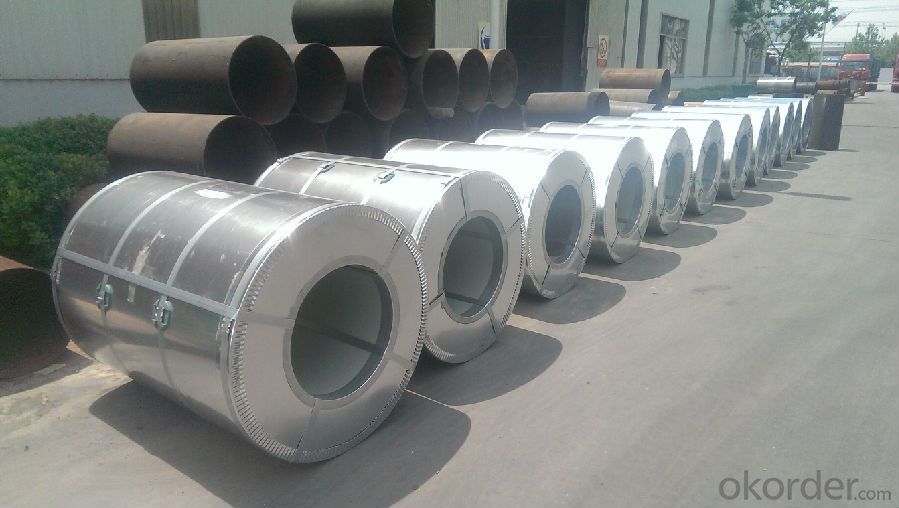
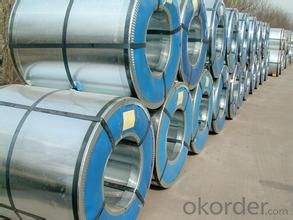
4. Hot Dipped Galvanized Steel Coils as The Building Material Specification
1)Based raw material: Hot rolled steel coils or Cold rolled steel coils
2) Thickness
3) Width
4)Coating mass
5) Spangle
6)Surface treatment
7)Coil inner diameter
8)Painting kind
9)Painting color
10)Painting thickness
Detail information:
1: Size: 0.15-1.2mm*600-1250mm
2: Paint: Top side: 15-25um, Back side: 5-9um, or according to customer’s order.
3: Base material: Hot dipped galvanized steel coil, GL
4: Zinc coating: 60g-275g.
5: Coil weight: 3-6tons
6: Coil ID: 508mm
7: Color: Any color.
8: Standard: ASTM, GB, JIS
9:Grade: CGCC,CGCH,SGCC, DX51D and ASTM
10:Surface Treatments: skin passed, chromated, oiled and antifinger
11: Approved Certificate: SGS / ISO9001 / BV
12: Package Method: Vertical/Horizontal, full wrapped with anti-moist paper inside, iron sheet (sea worthy)
13: Payments terms: T/T ,L/C,etc.
5.FAQ of Hot Dipped Galvanized Steel Coils as The Building Material
We have organized several common questions for our clients,may help you sincerely:
①How about your company?
A world class manufacturer & supplier of castings forging in carbon steel and alloy steel,is one of the large-scale professional investment casting production bases in China,consisting of both casting foundry forging and machining factory. Annually more than 8000 tons Precision casting and forging parts are exported to markets in Europe,America and Japan. OEM casting and forging service available according to customer’s requirements.
②How to guarantee the quality of the products?
We have established the international advanced quality management system,every link from raw material to final product we have strict quality test;We resolutely put an end to unqualified products flowing into the market. At the same time, we will provide necessary follow-up service assurance.
③How is the packaging and delivery?
Exporting Package with the steel material cover and the delivery term is based on the project.
- Q: What are the different types of steel coils available?
- There exists a variety of steel coils, each possessing distinct characteristics and uses. 1. Hot Rolled Steel Coils: These coils undergo production at high temperatures and are ideal for applications requiring a sleek and polished finish, such as automotive components, construction materials, and machinery. 2. Cold Rolled Steel Coils: In order to enhance surface finish and dimensional accuracy, these coils are processed at lower temperatures. They find extensive use in industries like automotive, appliances, and electronics, where precision is of utmost importance. 3. Galvanized Steel Coils: A layer of zinc is applied to these coils to safeguard the underlying steel against corrosion. They are commonly utilized in the construction sector, roofing, and automotive parts that are exposed to harsh environmental conditions. 4. Stainless Steel Coils: Created by combining iron, chromium, and other elements, these coils offer exceptional resistance to corrosion and possess high strength. They are widely employed in applications demanding hygiene, such as food processing equipment, medical instruments, and kitchen appliances. 5. Electrical Steel Coils: Specifically designed for applications requiring magnetic properties, these coils are utilized in transformers, electric motors, and generators. They exhibit low core losses and high permeability, ensuring efficient transfer of electrical energy. 6. Pre-painted Steel Coils: These coils are coated with paint or other protective coatings to enhance their visual appeal and provide additional protection against corrosion. They are commonly used in the construction industry for cladding, roofing, and siding. 7. Tinplate Steel Coils: A thin layer of tin is applied to these coils to prevent corrosion and act as a barrier against moisture and oxygen. They find widespread usage in the packaging industry for cans, containers, and other food or beverage packaging. These examples merely scratch the surface of the various steel coil options available in the market. Each variant possesses its own unique properties and applications, rendering them suitable for diverse industries and purposes.
- Q: what is the differance between ceramic and stainless steel headers and 4-2-1 and 4-1 and which are better for racing and should i get ceramic or stainless steel headers???? for a 98 civic
- 1) okorder ... The top two are of 4-1 design. Good luck, have fun.
- Q: i was giving this old knive. the knife part is stainless steel and has a couple rust spots but im not sure that the handle is (i think stainless) but it has this un smooth surface i dont think its rust because its not brown. would rubbing alcohol help clean it?
- You can also try Barkeepers Friend.
- Q: What are the different types of surface treatments for steel coils?
- There are several different types of surface treatments available for steel coils, each designed to enhance the appearance, protect against corrosion, and improve the overall durability of the steel. Some of the commonly used surface treatments for steel coils include: 1. Hot-dip galvanizing: This process involves immersing the steel coils in a bath of molten zinc, which forms a protective layer on the surface. Hot-dip galvanizing provides excellent corrosion resistance and can withstand harsh environments. 2. Electro-galvanizing: In this method, a thin layer of zinc is electroplated onto the surface of the steel coils. Electro-galvanizing offers good corrosion resistance and improves the aesthetics of the steel. 3. Organic coating: Steel coils can be coated with organic materials such as paints, lacquers, or polymer films. These coatings provide protection against corrosion, abrasion, and UV radiation, while also offering a wide range of color options. 4. Phosphating: Phosphating is a chemical treatment that converts the steel surface into a layer of phosphate crystals. This treatment enhances the adhesion of subsequent coatings and improves the corrosion resistance of the steel. 5. Chromating: Also known as passivation, chromating involves the application of a chromate conversion coating onto the steel surface. This treatment enhances the corrosion resistance and provides a decorative finish. 6. Oiling: Oiling is a simple surface treatment that involves applying a thin layer of oil onto the steel coils. This treatment helps prevent corrosion during storage and transportation and can be easily removed before further processing. 7. Pickling: Pickling is a process where the steel coils are immersed in an acid solution to remove impurities and scale from the surface. This treatment improves the surface finish and prepares the steel for subsequent processing or coatings. 8. Tin plating: Steel coils can be coated with a layer of tin through electroplating. Tin plating provides excellent corrosion resistance, solderability, and aesthetic appeal. These are just a few of the many surface treatments available for steel coils. The choice of treatment depends on the specific requirements of the application, including the desired appearance, corrosion resistance, and environmental conditions the steel will be exposed to.
- Q: Several reading methods of steel tape measure
- Indirect reading methodIn some parts of the steel tape can not be used directly, can use the ruler or ruler, the zero alignment measurement, ruler and measurement direction; steel tape measure distance to a whole scale ruler or ruler, with more than a long reading amount. (3).Some errors in measuring steel tape
- Q: What are the dimensions of steel coils used in the construction equipment industry?
- The dimensions of steel coils used in the construction equipment industry can vary, but they are typically around 48 to 72 inches in width and have an outer diameter of 60 to 80 inches. The weight of these coils can range from 5,000 to 30,000 pounds.
- Q: What are the benefits of using stainless steel coils?
- There are several benefits to using stainless steel coils in various applications. Firstly, stainless steel coils are known for their exceptional strength and durability. This makes them highly resistant to corrosion, rust, and stains. As a result, stainless steel coils can withstand harsh environmental conditions and are suitable for both indoor and outdoor use. This longevity ensures that the coils will last for a long time, reducing the need for frequent replacements and saving costs in the long run. Additionally, stainless steel coils offer excellent heat resistance. They can withstand high temperatures without warping or losing their structural integrity. This makes stainless steel coils ideal for use in applications that involve extreme heat or thermal cycling, such as in industrial furnaces or heating systems. Another advantage of using stainless steel coils is their versatility. Stainless steel is a highly adaptable material that can be easily formed into various shapes and sizes. This allows for customization and flexibility in design, making it suitable for a wide range of applications in different industries. Whether it is used in construction, automotive, aerospace, or even household appliances, stainless steel coils can be tailored to meet specific requirements. In addition to their physical properties, stainless steel coils are also favored for their hygienic properties. Stainless steel is non-porous, which means it is resistant to bacteria, mold, and other contaminants. This makes it an excellent choice for applications that require strict cleanliness and hygiene standards, such as in the food and beverage industry or medical equipment. Lastly, stainless steel coils are also environmentally friendly. They are fully recyclable, meaning they can be melted down and reused to create new products. This helps to reduce waste and conserve resources, making stainless steel coils a sustainable choice for many industries. Overall, the benefits of using stainless steel coils include their strength, durability, heat resistance, versatility, hygiene, and environmental friendliness. These qualities make stainless steel coils a reliable and cost-effective solution for a wide range of applications.
- Q: What are the safety standards for steel coil manufacturing?
- The safety standards for steel coil manufacturing include proper handling and storage, regular equipment maintenance, adherence to operational procedures, personal protective equipment usage, and comprehensive training programs for employees. Additionally, safety protocols related to transportation and loading/unloading processes must be followed to ensure a safe working environment.
- Q: I like steel strings but don't want to get a new guitar. Is that my only option?
- It will permanently ruin the guitars neck. Acoustic guitars have an adjustable metal rod in them called a “Truss Rod” that allows the neck to withstand steel string tension. How about putting on high tension nylon strings ?
- Q: Hi, I need to know why stainless steel is rust proof please tell me its for my science project. :)
- Stainless steel is an alloy of iron and other metals, notably Chromium and vanadium. You do not see it with the naked eye but at the surface of any stainless steel (SS) there are iron atoms and chromium atoms that are exposed. However, the chromium reacts preferentially to form an oxide. In essence, think of chromium sacrificing itself for iron so that iron will not rust. What a nice guy huh! This is called passivation just like most responders said. However, more than that the chromium oxide forms a tight protective layer that forms a physical barrier preventing Oxygen or any oxidant to reach and attack the iron underneath it. Also, the chromium oxide formed is not FLAKY and porous, so it does not mar much of the surface as an iron oxide (rust) would. For science project, you may not make it too technical but you can make a reference or make an ANALOGY of rust prevention to high school or social situations as being there for your friend or classmate But in real life, when the odds are too great, that protection afforded by chromium may not be enough. Because eventually all steel exposed to very oxidizing atmospheres will rust. Just a little break in the surface is enough to start the process of rusting.
Send your message to us
Hot Dipped Galvanized Steel Coils as The Building Material
- Loading Port:
- Tianjin
- Payment Terms:
- TT OR LC
- Min Order Qty:
- 25 m.t.
- Supply Capability:
- 10000 m.t./month
OKorder Service Pledge
OKorder Financial Service
Similar products
Hot products
Hot Searches
Related keywords
